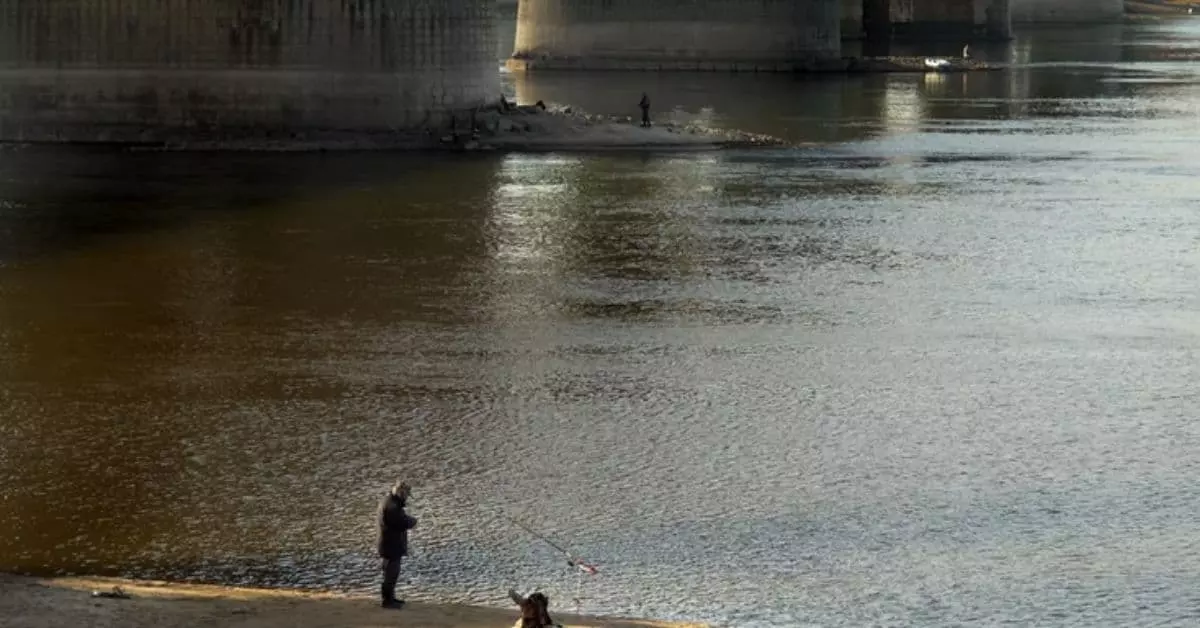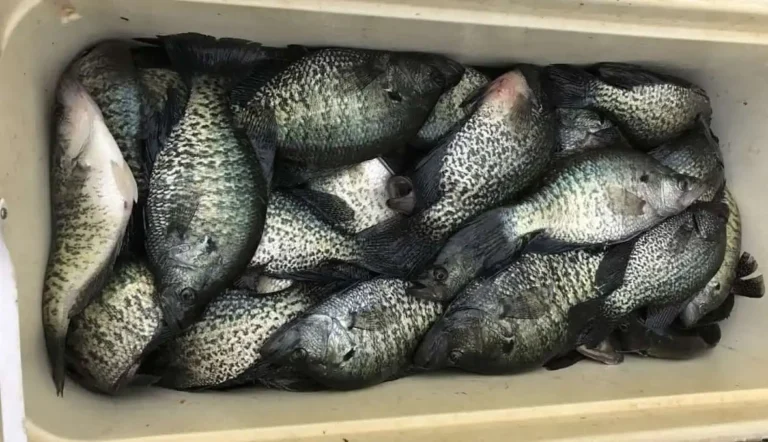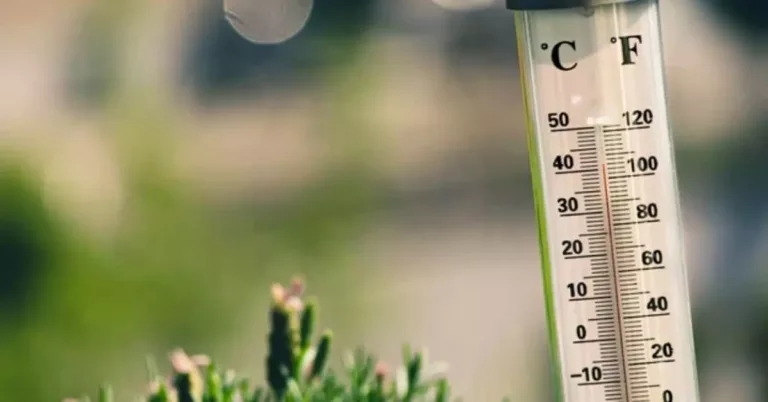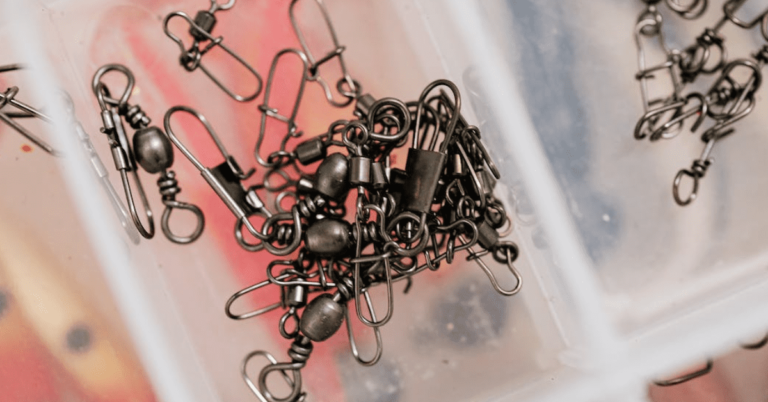Fishing Crappie In February, Prepare for Slab Sized Monsters

February is a prime month for targeting huge crappie. This is due to several factors. First, these papermouths are often gathered in large schools awaiting the spring spawning runs.
More important than that though, is that relatively few people fish during these cooler months and pleasure boating is almost non-existent during February.
So while it may be a bit chillier than in the spring, these quiet waters can make for a much more relaxing and enjoyable time on the water, especially if you catch a mess of slabs.
Prespawn Staging
As any serious crappie fisherman knows, when water temperatures begin to rise the crappie begin to stage in large schools in preparation for the seasonal crappie spawn.
These larger schools tend to make easy targets should you happen on them and it takes relatively little time to harvest a boatload of crappie.
While bait choices and fish locations can vary based on the conditions of the water, winds and temperatures we are going to attempt to remove some of that mystery for you. Hopefully, with these tips you can fill your boat in short order.
Tackle for February Crappie
As with any other time of year you want to select tackle appropriate to crappie.
Starting with a rod you want to go with an ultralight with plenty of flex. This will allow you to feel light hits.
Check out this article on Rod Power and Action
While the crappie will be schooling up, the relatively low temperatures of the water will still have the crappie feeding somewhat sluggishly and they may not hit as hard as they would during the spawn, so the lighter rod makes picking out these light strikes much easier.
Tube type jigs dropped in on the crappie tend to work great during this time, especially in brighter colors.
As the water is warming up, the crappie will still be holding fairly deep in the water, but they are likely to become more interested in colorful jigs. The tube jigs can be dropped down from above presenting them in a manner that crappie can’t resist striking at.
Whether you opt for tubes, spinners or live minnows keep in mind that the metabolism of the fish will still be somewhat lower than at other times of the year.
Due to this you will find that somewhat smaller bait options tend to perform slightly better than their larger versions. Opt for a 1 to 1-and-a-half-inch minnow or tube instead of the larger 2 to 3-inch minnows during this time.
Where Should You Fish for February Crappie
Due to the relatively cold waters in February Crappie will be much deeper than at later times in the year. Start out looking for them in channels and isolated structures in around 20 to 25 feet of water.
While smaller crappie are likely to be found in shallow waters in more numbers, the bigger slabs will be holding at these deeper locations.
Depth changes such as along the original streams of a reservoir, or where a side stream flows into a main body of water, with isolated cover are your best bet.
Many of the water bodies common for crappie are man-made reservoirs that have lowered water levels during the winter months. This makes crappie relatively easy to find as the bait fish and crappie are restricted in where they can travel.
However, as the spring rains begin to swell the waters the bait fish will scatter into the shallower areas forcing the crappie to follow them. However, in February they should still be confined to deeper waters in all but the most southern states.
In southern states monitor your water temperatures. Once the waters reach temperatures of around 45 to 50 degrees the crappie will begin to go into feeding frenzies, a sure sign that the spawn is beginning.
During this time you can locate them on points that are fed by small streams and anywhere you find large schools of bait fish.
They will also hold just outside of shallow coves in preparation for the spawn, at these temperatures these areas do not necessarily have to have cover present.
If you find one of these schools, then slowly lower the depth you are fishing at until you stop getting strikes. Once that happens, come back up 2 or 3 feet.
The larger crappie will tend to hold just under the smaller ones, so by fishing down through the school and then coming back up from the bottom slightly you will find the depth they are holding at.
Where should I fish for Crappie If On The Shore
Oftentimes shore fishermen feel that they can’t get to the fish. With crappie that doesn’t necessarily have to be the case.
Since crappie tend to prefer deeper waters with cover during this time and if possible along the edges of channels, think of structures that create all of these.
Bridges and Spillways are excellent options if fishing from the shore. Oftentimes the concrete will absorb the sunlight and tends to raise the water temperature around the bridge just slightly higher.
This slight temperature increase can create an ideal spot for bait fish, in addition to that the water around the pilings tends to be deeper, and there is often a channel formed creating both cover and elevation changes.
Finally, in many cases, these bridges cross over smaller tributaries near the main lake where it is less expensive to build a bridge than crossing the entire lake.
All of these features of a bridge can lead to excellent fishing during February.
Techniques for Fishing Crappie in February
There are several tips for fishing February crappie, a few of these include fishing over your target, monitoring your depth, and selecting smaller baits.
Fish Over Your Target Area
When fishing brush and channels during February try and fish just above the brush location.
Once you have selected your target area, spend some time presenting your bait in various manners over the target cover before you fish in the brush. This will help to minimize hangups and disturbing the water should you snag a line.
Should you snag a line it is likely that the noise and water disturbance made by trying to free it will scare off the larger crappie. While brim and even smaller crappie will quickly return, this is not the case with the larger crappie and it could take several hours or more for them to return.
Depth Matters More than You Think
While fishing, make note once you locate a fish what depth you were fishing at. Crappie tend to all hold at relatively the same depths and this can hold true throughout the lake.
If you end up changing locations to a different spot, start off at the depth you were having luck with in the last location.
Oftentimes this depth will remain relatively the same for days at a time. If you return the following day, start off with your previous depth. It is likely they are still holding at that depth, or have risen only slightly as the water warmed.
If its your first time hitting the water and you don’t know at what depth the fish are holding then you can rig up several poles with about a foot or two difference in depth. Drift around with the current along channels and brush piles until you get a hit or two.
Now you can use this information to tailor the rest of your fishing towards that depth.
Smaller Baits Can be Better
It has already been mentioned, but it’s worth saying again, go with a smaller bait during the cooler months. The lower metabolism means that the fish may not be out looking for a 7 course meal, but a light snack is just right.
You will likely find that small 1 inch tube jigs or even 1 to 1.5 inch minnows out perform the larger bait options. Smaller sized Wooly Jigs also tend to perform well during this time frame.
Conclusion
If you are willing to brave the cold, you can easily land a boatload of crappie, papermouths or slabs, whichever you prefer, during the month of February.
Now that you know where to look, what gear and bait to use and a few techniques to locate the fish, you are well on your way to a tasty catch.
So hit the water, catch a few and come back for more tips.






